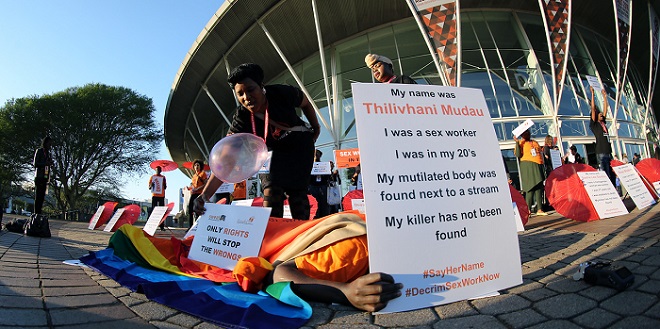
Paris, France | AFP |
A labelling error and reckless media hype in the 1980s led to unjustly branding a gay airline employee as “Patient Zero” in the US AIDS epidemic, scientific and historical sleuthing detailed Wednesday.
The deadly virus, which has claimed more than 650,000 lives in the United States in over four decades, jumped from the Caribbean to New York City around 1970, researchers reported in the journal Nature.
A 33-year old blood sample analysed with new techniques proves once-and-for-all that the man posthumously vilified as the American HIV epicentre, Gaetan Dugas, was simply one of the disease’s many victims.
Before he died in 1984, he helped scientists trace how AIDS had spread by identifying dozens of his sexual partners.
“Dugas is one of the most demonised patients in history,” said Richard McKay, a public health historian and one of the study’s two lead authors.
The story of “Patient Zero” began in 1982 when investigators from the US Centers for Disease Control (CDC) realised that several men in Southern California suffering from a rare, lethal lung infection were linked by sexual relations.
As the scientists conducted patient interviews to reconstruct their social network and trace the infection — not yet known as acquired immune deficiency syndrome, or AIDS — back to it source, one man in particular came up repeatedly: Gaetan Dugas.
In keeping with protocol, they assigned him a number, 057.
But because he was from New York and not Los Angeles, where the investigation was unfolding, they added an “O” for “Outside-of-California” in their notes.
But soon researchers “began interpreting the ambiguous oval as a digit, and referring to ‘Patient O’ as ‘Patient 0’ (zero),” said McKay.
At the same time, health officials began to realise just how extensive the potential network of infection might be.
Over 65 percent of the gay men in the Los Angeles disease cluster reported more than 1,000 sexual partners in their lifetimes, and over 75 percent had had 50 in the previous year alone.
RNA jackhammer
Case 057 — Dugas — managed to name 72 of the roughly 750 men he had been with in the previous three years, far more than most of the others interviewed.
This very fact, combined with his unusual and memorable name, may have contributed to his later notoriety, McKay speculated.
When the scientific study based on the investigation was published in 1984, “Patient 0” stood out in a diagram which suggested he was the viral lynchpin between the east and west coast outbreaks of the disease.
Two years later, an enterprising journalist discovered Dugas’ name and cast him as a super-villain in his influential book on the AIDS crisis, “And the Band Played On.”
It has long been clear to experts that the US HIV epidemic did not start with this hapless French-Canadian living in the Big Apple, but biological evidence has been lacking.
Until now.
To lay the case to rest, co-lead author Michael Worobey from the University of Arizona developed a new technique for recovering genetic material from the HIV virus in decades-old blood samples.
The method, called RNA jackhammering, breaks down the huge human genome in the degraded blood sample into tiny overlapping chunks.
This, in turn, makes it possible to extract genetic material, called RNA, from the virus.
By extracting viral DNA from more than 2,000 blood samples collected from US men in 1978 and 1979, the scientists showed that HIV already displayed a high level of genetic diversity in the 1970s.
The virus, in other words, had already been circulating on US soil for some time.
They were also able to trace its origin to the Caribbean, and identify its port of entry into the United States as New York City.
“That information is stamped into the RNA of the virus from 1970,” Worobey said in a statement.
“The outbreaks in California that first caused people to ring the alarm bells and led to the discovery of AIDS were really just offshoots of the earlier outbreak that we see in New York City.”
 The Independent Uganda: You get the Truth we Pay the Price
The Independent Uganda: You get the Truth we Pay the Price



